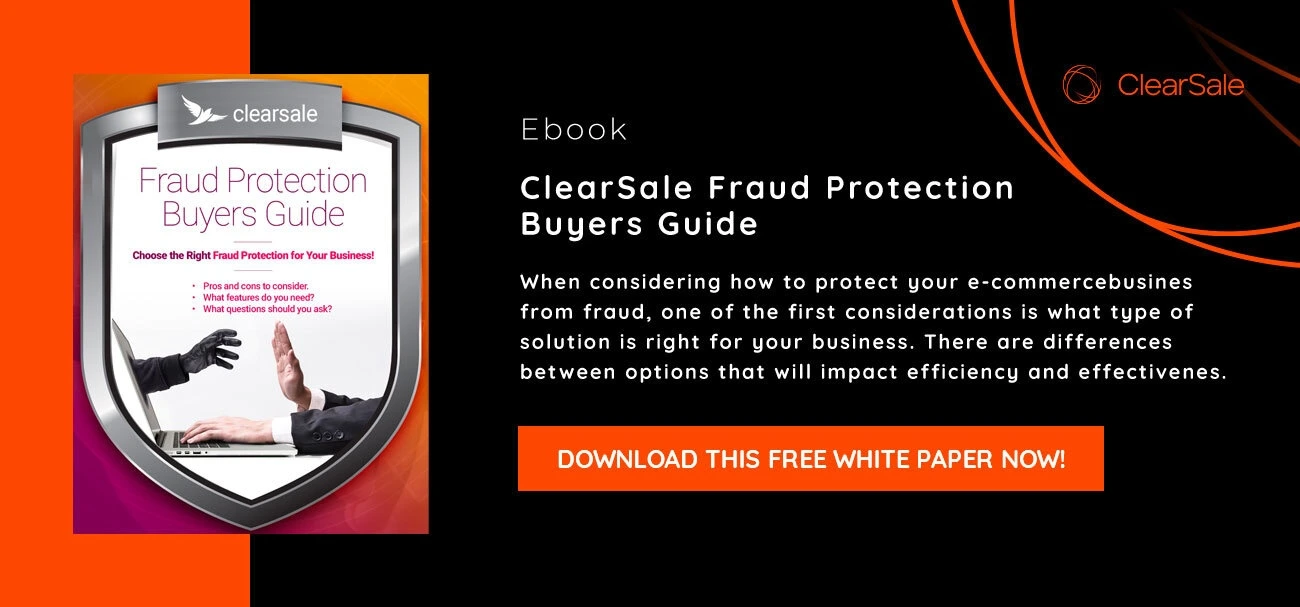E-Commerce Fraud Protection for the Holidays: 9 Ways to Start Now
As we bask in the heat of the summer, winter and the holidays might be some of the last things on consumers’ minds. But with the holiday shopping season already less than six months away, now is the time for retailers to start preparing.
For a retailer, typical holiday planning includes displays, promotions, and seasonal staffing needs. But for e-commerce merchants, planning for the holidays should also include planning for stronger e-commerce fraud protection.
After all, huge sales peaks (total retail sales for the 2019 holiday shopping season are projected to surpass $1 trillion in the United States alone) … also typically bring huge increases in attempted fraud.
Before you start dreaming of holiday dollar signs dancing in your head, make sure you’re not turning a blind eye to your fraud prevention measures. Understanding what’s ahead of you and creating a documented strategy will help you get ahead of the risks.
Here are nine simple steps you can take today to protect your business against fraudsters this holiday season.
1. Recognize the Signs of Account Takeover Fraud
Account takeover fraud occurs when a fraudster uses a piece of a victim’s identity (such as Social Security numbers or email addresses) to gain access to and take over a victim’s account. Fraudsters then compromise checking, savings and brokerage accounts to steal from you and your customers.
How to Prepare Now
If you know the signs of account takeover fraud — including multiple failed login attempts and logins from new devices with different IP addresses and device IDs — you can be ready to give suspicious transactions a second look.
2. Understand How Phishing Scams Work
Emails to customer service departments tend to rise during the holidays. Fraudsters may take advantage of this increase by sending a larger-than-normal volume of phishing emails in an effort to get overworked and overtired employees to accidentally click a link.
The result can be disastrous: An employee might accidentally reveal sensitive business data or confidential credentials and put your business at risk for a data breach.
How to Prepare Now
Teach employees what to look for in phishing mails and strategies for separating legitimate emails from fraudulent ones, like hovering their mouse over the sender’s name to see if they are who they say they are. Encourage employees to not open attachments or click on links unless they’re positive the email is legitimate.
3. Verify Click-and-Collect Purchases
The holiday season brings last-minute shoppers who want to take advantage of your same-day in-store pickup options to finish up their holiday shopping. While it’s convenient for customers, it’s also perfect for fraudsters, who can quickly place a fraudulent transaction and collect the goods, before a retailer or customer has the chance to notice the fraud.
How to Prepare Now
Begin getting in the habit of asking customers to present an ID and the credit card used to make the purchase at pickup and compare that against the order information.
4. Clarify Exchange and Return Policies
Nothing makes a shopper happier than to get their holiday shopping completed far in advance. But what happens if the recipient isn’t as happy with the gift they receive and find the date has long passed for exchanges or returns? Merchants might end up losing two customers and finding themselves on the receiving end of an expensive chargeback.
How to Prepare Now
Take some time to review your current exchange and refund policies and consider relaxing them around the holidays to ensure recipients are happy and have the opportunity to get the gift they really wanted. Then clearly post these policies on product, checkout and policy pages.
5. Review Purchases With a High Resale Value
Every year, video game consoles, smart phones and other electronics top consumers’ shopping lists. Unfortunately, these items are just as popular with fraudsters, thanks to the ease with which they can be sold on the secondary market at close to the purchase price.
How to Prepare Now
Merchants who sell small but high-value items must be mindful about their increased risk to fraudsters, especially during the holiday season. To minimize risk, retailers should carefully review high-value transactions, especially those from first-time customers.
6. Expect the Unexpected
As holiday shoppers come out in full force, e-commerce merchants must be prepared to see a range of buying patterns. While some might look suspicious (like when the billing and shipping addresses differ), don’t automatically assume that unusual purchases are fraudulent or that the type of fraud you experienced last year will be the same as the fraud you see this year.
How to Prepare Now
It’s important to review your e-commerce sales patterns from previous holiday shopping seasons to familiarize yourself with the fraud patterns and levels you saw last year. But it’s just as important to keep up-to-date on emerging fraud patterns to ensure you’re prepared for anything the season throws at you.
7. Watch for Suspicious Gift Card Purchases and Redemptions
Gift cards have become the purchase of choice for many holiday shoppers who are having trouble picking out the perfect gift. But gift cards’ anonymity makes them perfect for fraudsters who are either looking to quickly turn them into cash by reselling them at close to face value or are using them to make in-store purchases that they then try to return for the cash value.
How to Prepare Now
Online retailers should watch for unusual purchase patterns, like customers who load high dollar amounts onto gift cards or purchase numerous cards at the same time and require receipts for returned items.
8. Ensure Websites and Apps Are Secure
As technology evolves, e-commerce merchants may have trouble keeping up with the latest digital security solutions that will help keep their businesses and customers safe from fraudsters.
How to Prepare Now
Ensure that sensitive and confidential business data is encrypted, rendering it useless to any fraudster who may bypass your security measures. Confirm your site uses Secure Sockets Layer authentication and security providers like Verisign, 3-D Secure and other multilayered cybersecurity approaches, and don’t forget to install security measures on apps.
9. Update Fraud Prevention Tools
Even if you’re doing all of the above to protect your business from fraudsters all year long, it can still be hard to separate legitimate transactions from the fraudulent ones, reduce false declines and defend against expensive chargebacks. If your current fraud prevention solution isn’t doing what you need it to, now is the perfect time to consider making a switch.
How to Prepare Now
If you don’t know where to start, download ClearSale’s free “Fraud Protection Buyers’ Guide.” It walks you through available options and ensures you’re asking the right questions and choosing the fraud protection solutions that will fit your needs. The result? You’ll identify more fraud, increase sales, and decrease false declines and chargebacks — all in time for the holiday season.
 Chargeback & Fraud Protection Team
Chargeback & Fraud Protection Team
